site search
online catalog
CANTEEN AND CUP WITH GETTYSBURG CAMPAIGN SERVICE AND BATTLE HONORS, BATTERY K 1st US LIGHT ARTILLERY: HORSE ARTILLERY!
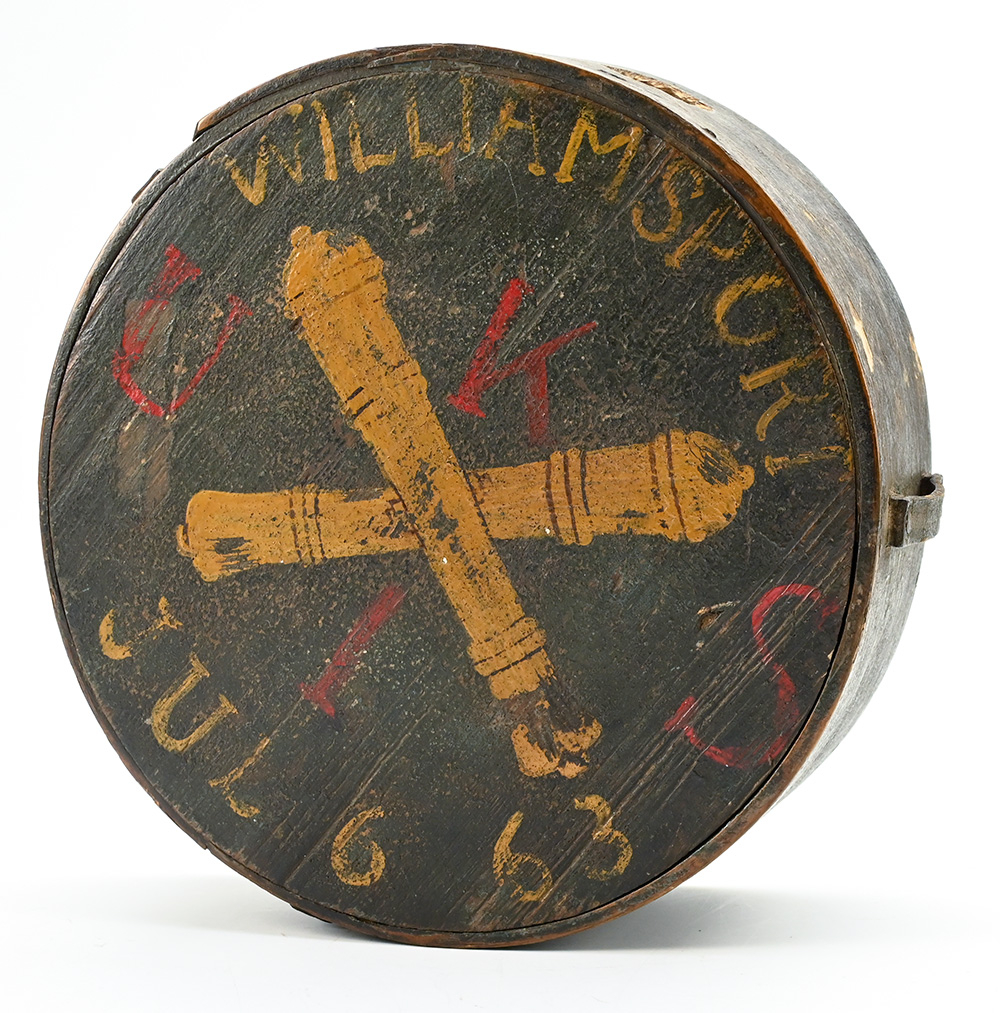
Hover to zoom

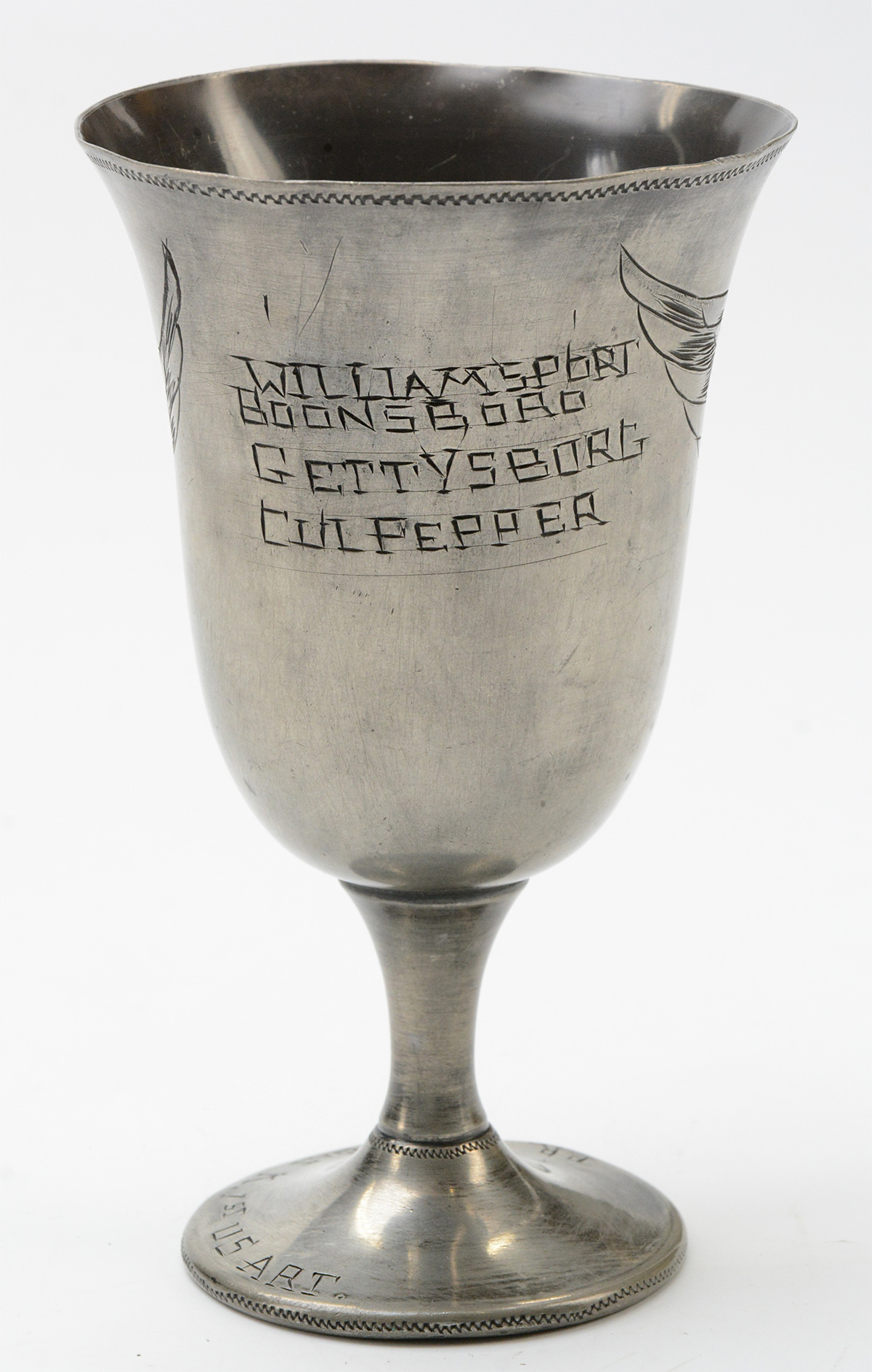
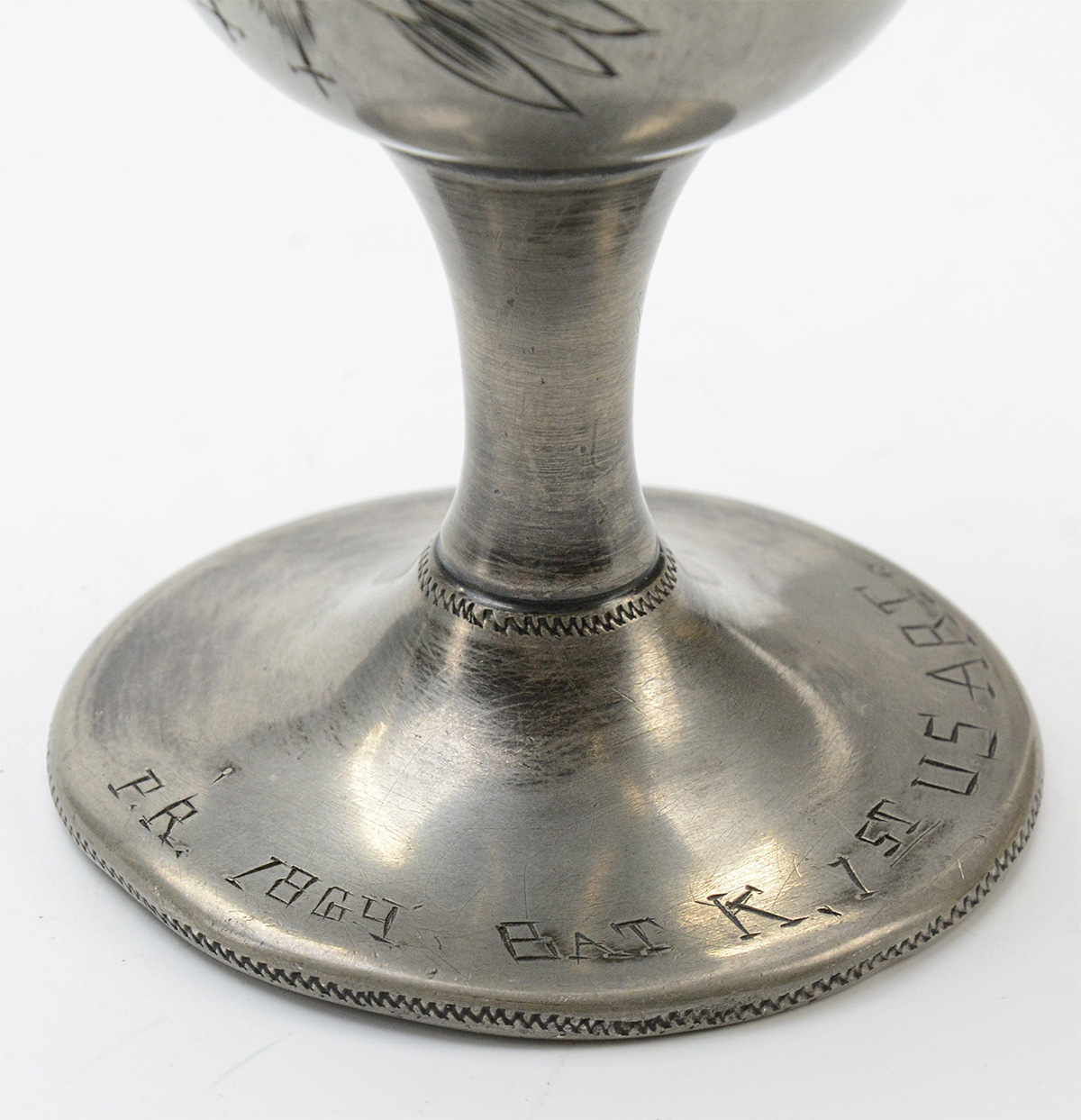
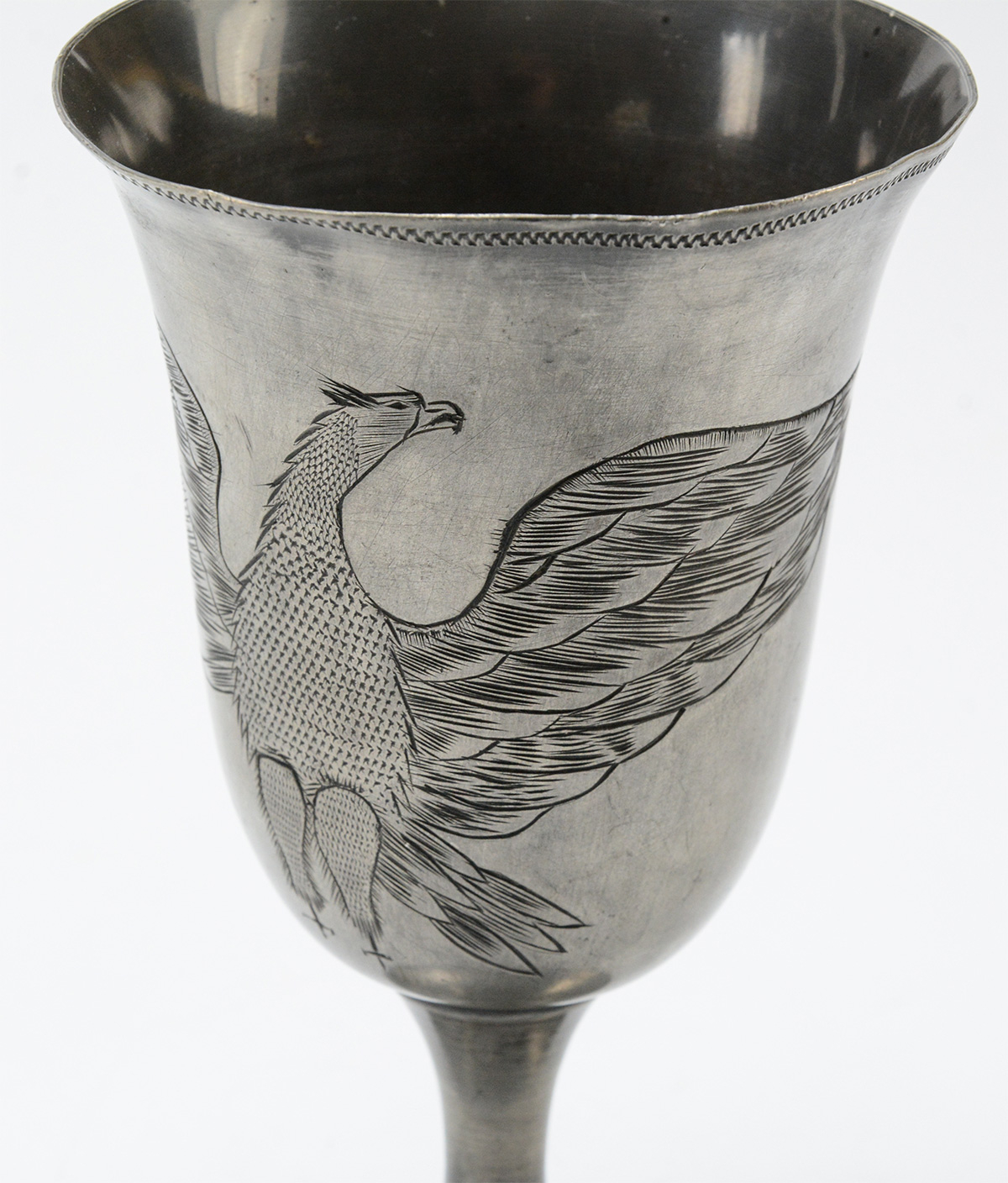
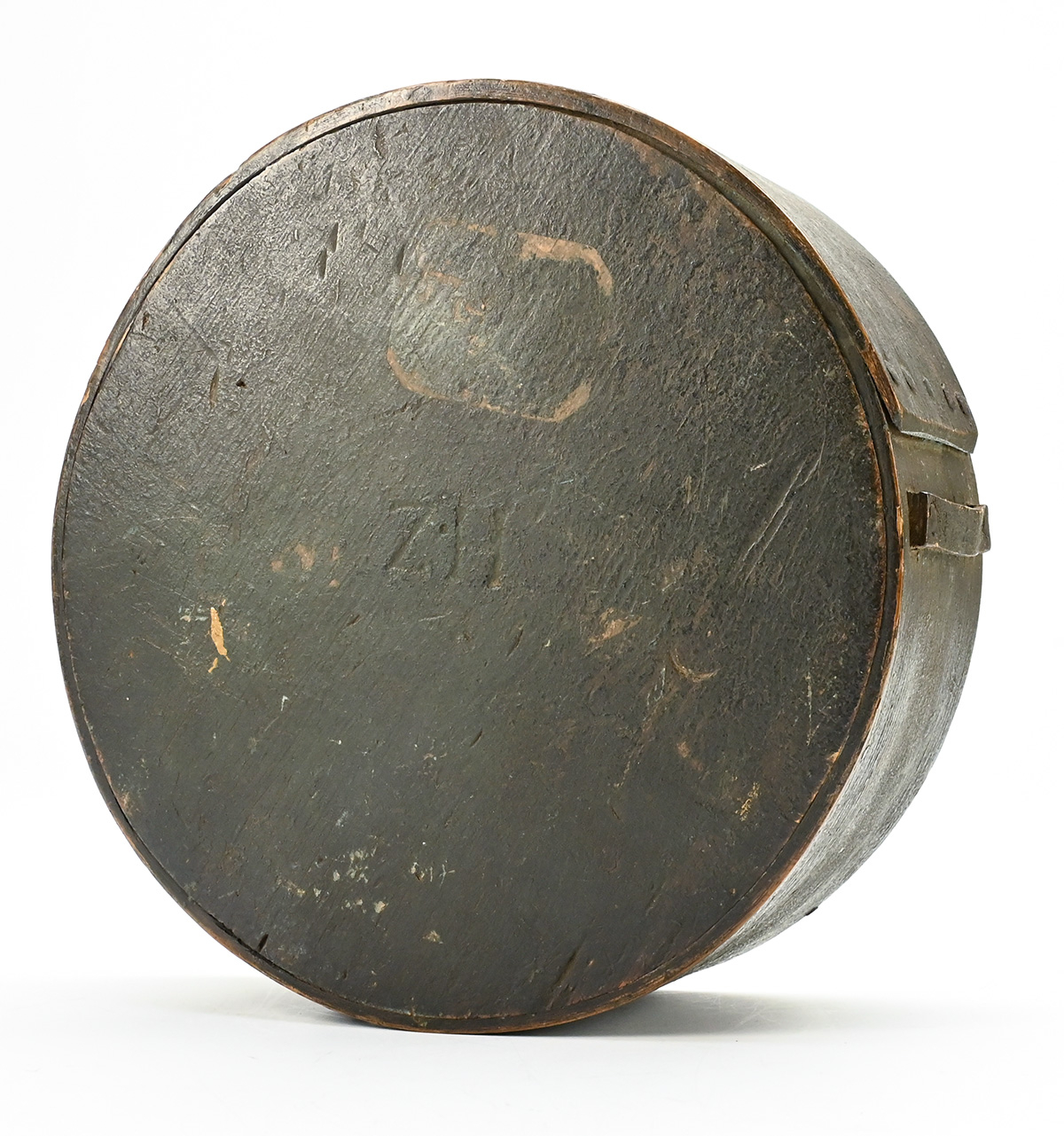
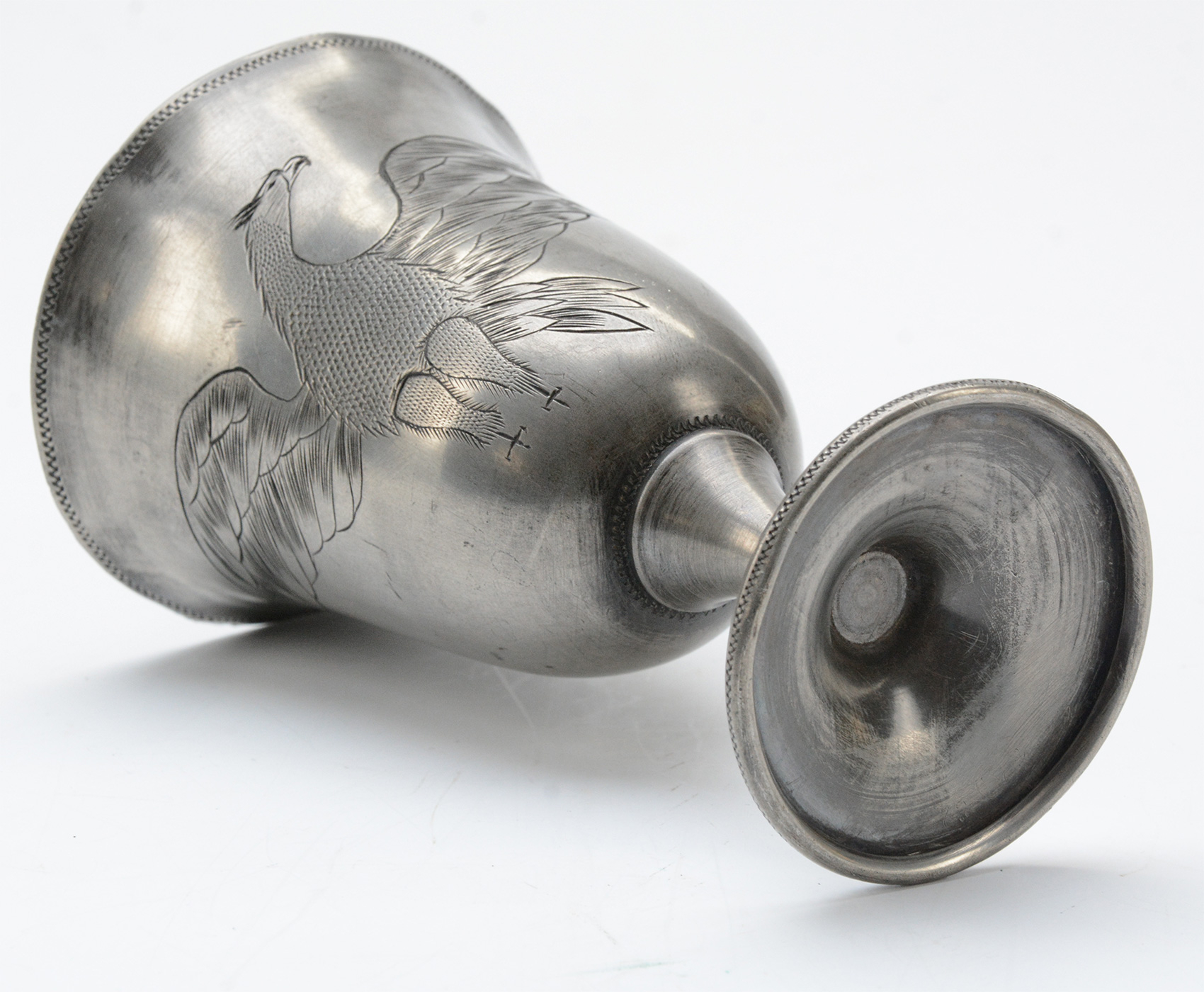
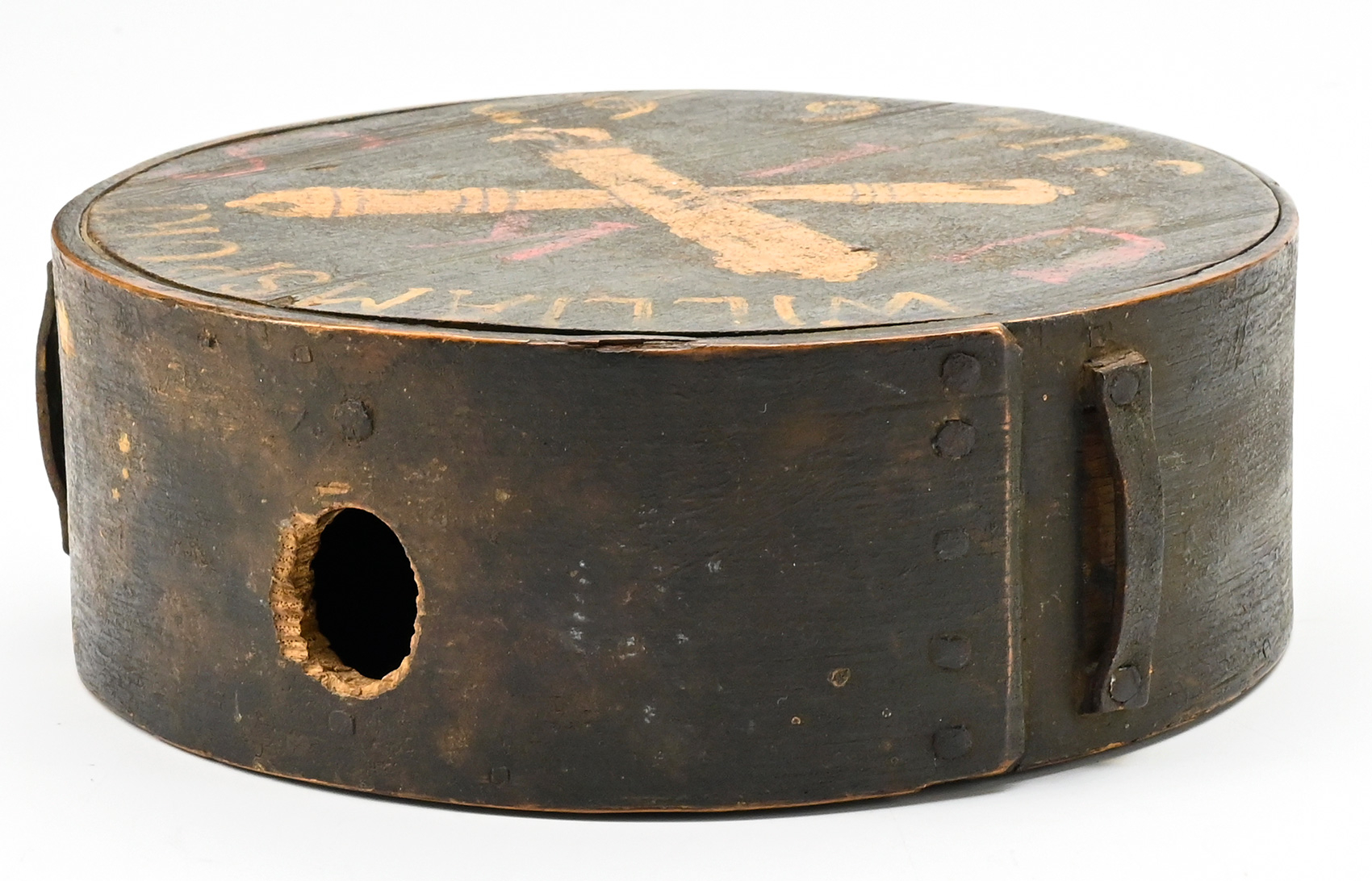
$3,150.00 SOLD
Originally $3,950.00
Quantity Available: None
Item Code: 490-2627
These two pieces are decorated to commemorate the soldier’s service, particularly during the summer and fall of 1863. The canteen is an 1812 pattern cheesebox style with original olive drab paint, leather strap brackets, and a maker’s initials “ZH” or “HZ” branded on the reverse. The hole for the spout shows some chipping, but nothing bothersome and the paint is original and very good. Some 25,000 of these were ordered by Tench Coxe, Purveyor of Public Supplies, in 1812 to supply detached militia troops acting as auxiliaries to U.S. regulars. They were supplied by a number of coopers. Elisha Burr is known as one supplier, but others branded with initials such as “J.R..” “N.R.,” and, here, “ZH” or “NH” have not yet been identified. See O’Donnell, Canteens, pp. 47ff., for details on this pattern. Quantities ended up in state and militia hands after the war.
In this case an artist added a pair of crossed cannons, muzzle down, painted in yellow on the face, with “WILLIAMSPORT” is top center and “JUL 6 63” at bottom center, both in yellow matching the cannons. The unit designation is added in red in the angles formed by the barrels: “K” over “1” top and bottom: “U” and “S” at either side indicating Battery K 1st U.S. Artillery.
The pewter cup, goblet in form, is nicely engraved with a ric-rac border along the lip and a standing eagle with raised wings on the other. Added more crudely, certainly by the veteran himself, are four battle honors: WILLIAMSPORT / BOONSBORO / GETTYSBURG / CULPEPPER.” The base is engraved, “P.R. 1864 BAT K 1st US ART.”
We do not find a “P.R.” in the readily available online rosters of Battery K, but we do find a Paul Rutter of Battery E, who served from April 9, 1861, to discharge on April 4, 1864. This fits the date on the goblet base and he is a particularly likely candidate since during the Gettysburg Campaign both batteries served in the Second Horse Artillery Brigade of the Army of the Potomac’s Cavalry Division and may have loaned one another personnel to fill their ranks. Battery E had already consolidated with Battery G and transfers regarded as temporary were likely kept on the books of the original company.
At Gettysburg Battery E did not see much action, but Graham’s Battery K fought in support of Merritt and Kilpatrick on July 3 against the Confederate right. They also took part in the race to cut off Lee’s retreat and destroy his wagon trains. On July 6 Battery K, once more with Merritt, was part of the attack against the east side of Williamsport, which turned into a stiff fight not only from Confederate defenders in the town, but from a Confederate advance from the north that caused Merritt and others to pull back toward Boonsboro. Merritt praised the battery in his official reports. Buford did also: “Captain Graham fought his battery with marked ability, and to the admiration of all witnesses. The officers and men behaved with their usual courage, displaying great unwillingness to fall back, and requiring repeated orders before they did so.”
Two days later, July 8, they were again engaged as Stuart sent four cavalry brigades down the roads northeast of the town. Laino remarks in his map of the engagement that it developed into a contest between Confederate and Union horse artillery. Buford reported the action lasted from 5:00 a.m. to about 5:00 p.m. Confederate began to gain the upper hand until Union infantry began arriving. Buford reported driving Confederates back about four miles. The last battle honor on the goblet refers to the battle fought on Sept. 13, 1863, as Pleasanton led his three cavalry divisions across the Rappahannock to attack Stuart’s headquarters at Culpepper Court House. Union cavalry captured the town, Custer gathering up one hundred prisoners and three artillery pieces in charge on the center of the Confederate line. With heavy skirmishing Confederates staged a fighting withdrawal to cross the Rapidan, where Union forces did not follow.
Anything related to the mounted artillery units serving with the cavalry is scarce and this set displays great. Decorating the canteen specifically with “Williamsport” and none of the other engagements indicates it was a souvenir of the battle and likely Confederate used: it was nothing issued to Federal troops in the Civil War. But, although an older style, it was lightweight and functional, and Confederates were certainly not averse to wood canteens, which many thought kept water cooler. The cup was professionally, if somewhat naively, engraved with the eagle, but the lettering was certainly done by the veteran. He may have done the canteen as well, if his talents suited painting better than engraving. [sr] [ph:L]
~~~~~~~~~~~~~~~~~~~~~~~~~~~~~~~~~~~
THIS ITEM, AS WITH ALL OTHER ITEMS AVAILABLE ON OUR WEB SITE,
MAY BE PURCHASED THROUGH OUR LAYAWAY PROGRAM.
CLICK HERE FOR OUR POLICIES AND TERMS.
THANK YOU!
Inquire About CANTEEN AND CUP WITH GETTYSBURG CAMPAIGN SERVICE AND BATTLE HONORS, BATTERY K 1st US LIGHT ARTILLERY: HORSE ARTILLERY!
Most Popular
Historical Firearms Stolen From The National Civil War Museum In Harrisburg, Pa »
Theft From Gravesite Of Gen. John Reynolds »
Selection Of Unframed Prints By Don Troiani »
Fine Condition Brass Infantry Bugle Insignia »
Large English Bowie Knife With Sheath 1870’S – 1880’S »
Imported (Clauberg) Us Model 1860 Light Cavalry Officer's Saber »
featured item
FROM LIFE CDV VIEW OF CUSTER BY GOLDIN
This is a very nice “from-life” view of Custer by John Goldin & Co. in May 1865, Katz #70 in his Custer in Photographs, taken in May 1865. Custer is shown seated, from mid-calf up, resting one arm on the back of the photographer’s chair,… (2024-450). Learn More »


